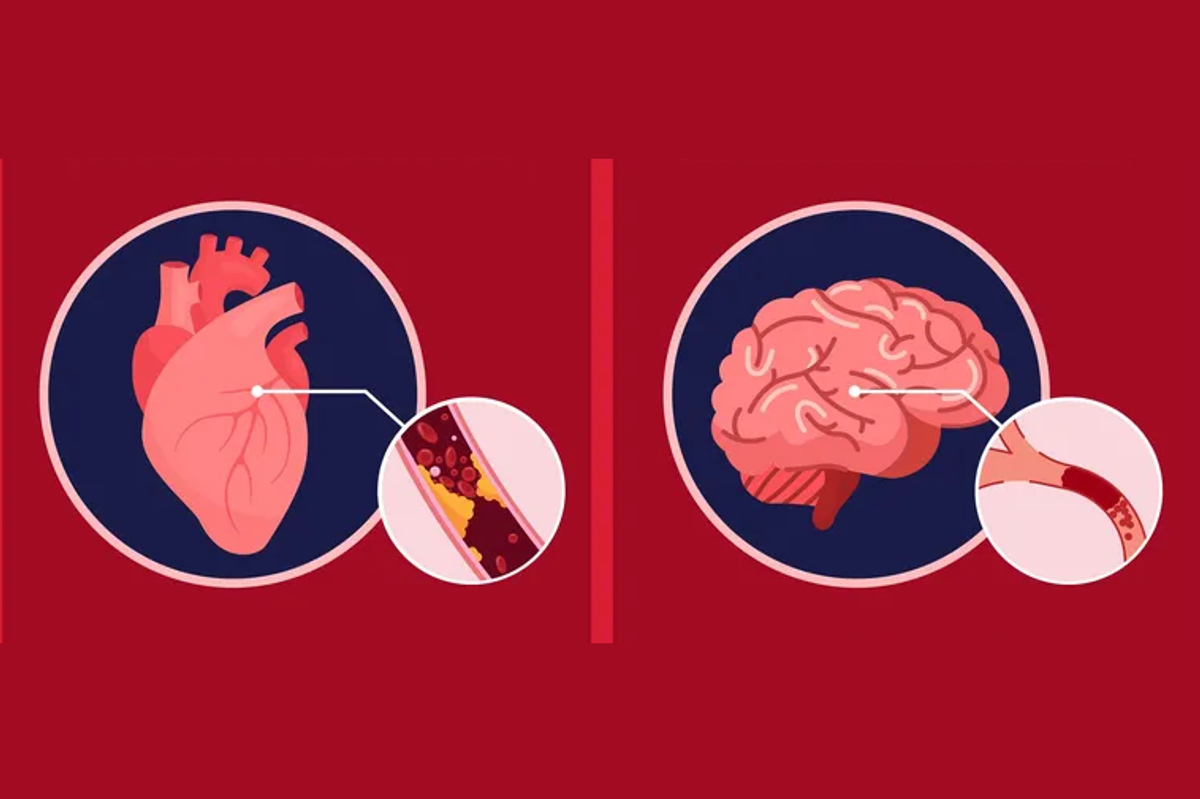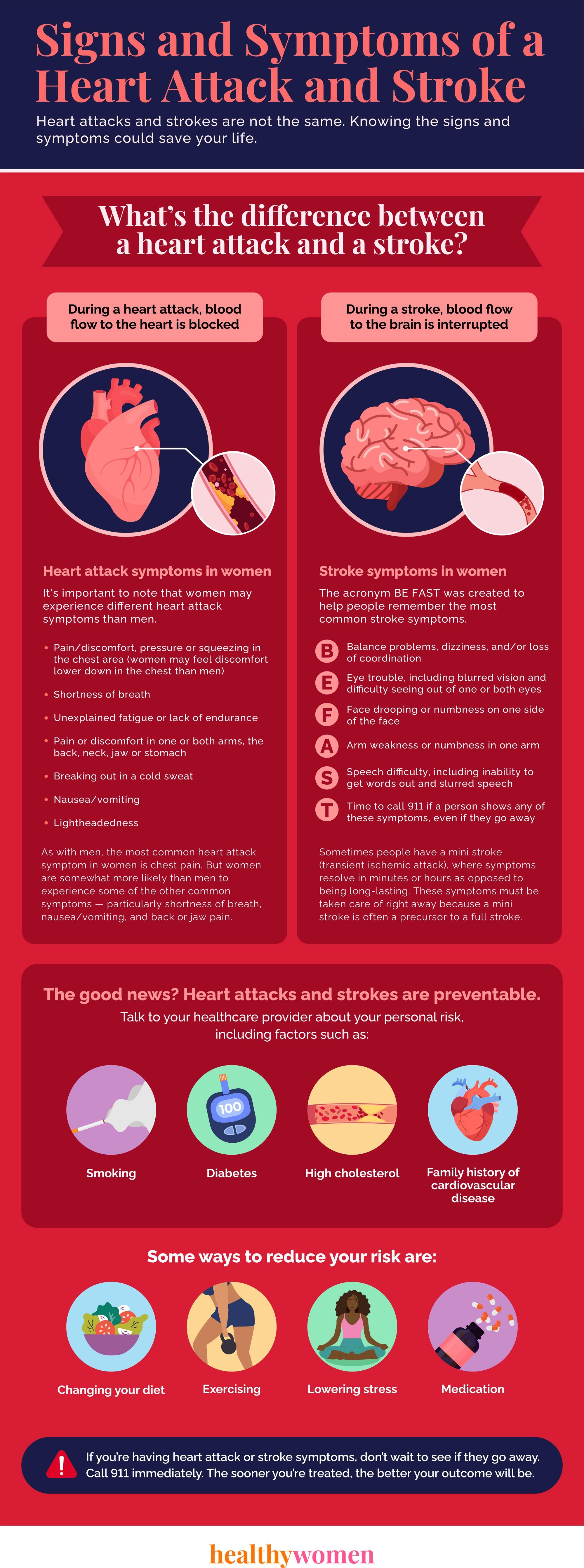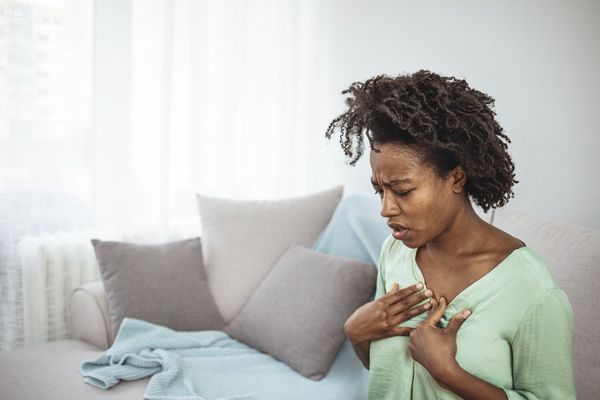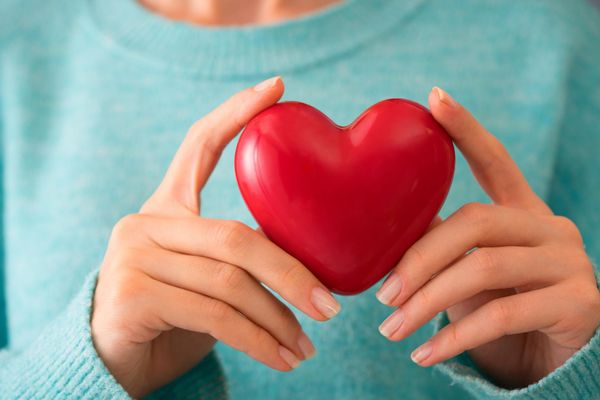Designed by Megan Schofield
Friday, February 4 is National Wear Red Day.
What’s the difference between a heart attack and a stroke?
- During a heart attack, blood flow to the heart is blocked
- During a stroke, blood flow to the brain is interrupted
Heart attack symptoms in women It’s important to note that women may experience different heart attack symptoms than men.
⚠️ As with men, the most common heart attack symptom in women is chest pain. But women are somewhat more likely than men to experience some of the other common symptoms — particularly shortness of breath, nausea/vomiting, and back or jaw pain. | Stroke symptoms in women The acronym BE FAST was created to help people remember the most common stroke symptoms.
⚠️ Sometimes people have a mini stroke (transient ischemic attack), where symptoms resolve in minutes or hours as opposed to being long-lasting. These symptoms must be taken care of right away because a mini stroke is often a precursor to a full stroke. |
The good news? Heart attacks and strokes are preventable. Talk to your healthcare provider about your personal risk, including factors such as:
- Smoking
- Diabetes
- High cholesterol
- Family history of cardiovascular disease
Some ways to reduce your risk are:
- Changing your diet
- Exercising
- Lowering stress
- Medication
If you’re having heart attack or stroke symptoms, don’t wait to see if they go away. Call 911 immediately. The sooner you’re treated, the better your outcome will be.
- Stroke Symptoms Checklist - HealthyWomen ›
- Clinically Speaking: Questions to Ask Your Healthcare Provider ... ›
- Is Smelling Burnt Toast a Sign That You're Having a Stroke ... ›
- Symptoms of Heart Attacks in Women - HealthyWomen ›
- The Intersection of Heart Disease, Diabetes and Stroke - HealthyWomen ›
- Cardiac Arrest vs. Heart Attack - HealthyWomen ›
- How Mental Health Affects Your Heart - HealthyWomen ›
- I Didn’t Know Having a Baby Increases Your Risk for Stroke - HealthyWomen ›
- I Wasn’t Tired. I Was in Heart Failure. - HealthyWomen ›
- No estaba cansada. Tenía insuficiencia cardiaca. - HealthyWomen ›








